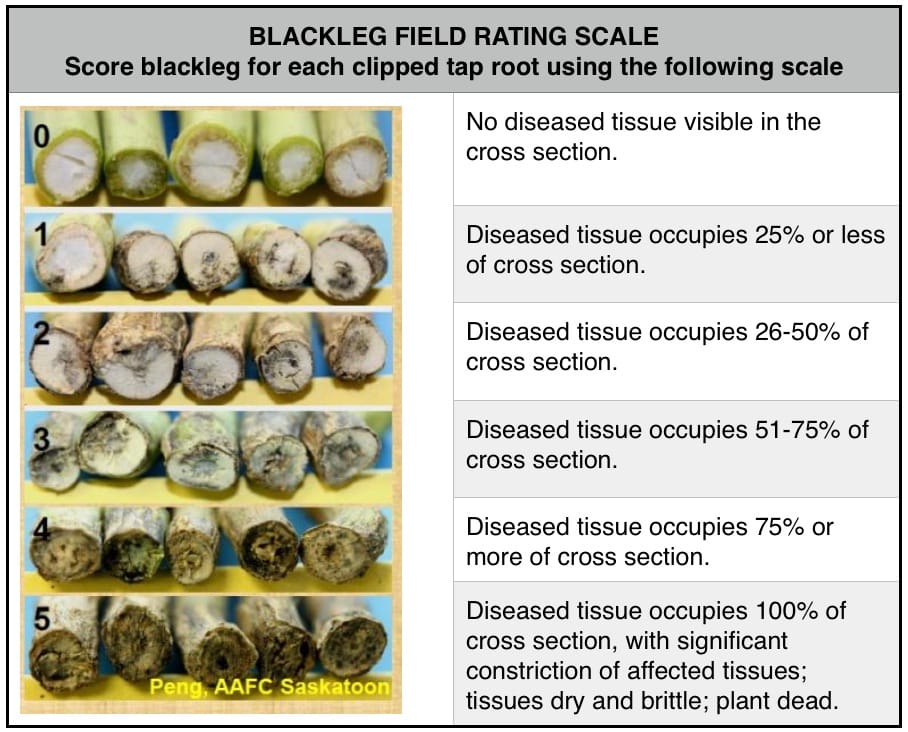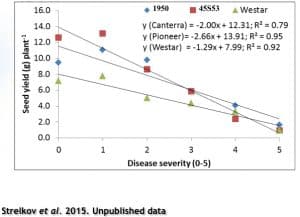If one in 10 plants has a blackleg rating of 2 or worse, this is a clear sign that the blackleg pathotypes in a field do not align with the blackleg resistance (R) package in the particular hybrid grown.

While yield loss in this situation may not be significant (each affected plant will have at least 40% yield loss, but other plants will be OK), taking no corrective action could mean much higher yield losses the next time the same canola variety or resistance gene(s) are grown on that field.
If blackleg can be detected in half the plants (50% incidence), this is an extreme level of disease that will require corrective action the next time around – even if disease rating for most of those plants is just a 1 or a 2. Of course, if disease ratings are higher, yield loss will increase substantially. Recent research in Western Canada showed that moving from a 1 rating to a 2 rating represents 17%-24% yield loss per plant. (See the graph below.)
If blackleg incidence and severity is comparatively low, but does seem to be getting worse, this situation may also require corrective action to prevent economic yield loss the next time canola is grown on that field.
Corrective action includes extending rotation to at least one in three and switching to a different R source on that field. Read more about R-source rotation here.
Further reading:
Blackleg.ca
Lots more on variety data to help with seed choices
Identifying verticillium. Or is it blackleg?
Disease scouting at harvest


